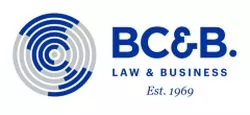In Mexico, a third party may challenge a patent through either an ex parte proceeding that applies to pending patent applications, or an inter partes proceeding that applies to issued patents. Both proceedings are held before the Mexican Institute of Industrial Property (IMPI).
The ex parte proceeding, known as a third party observation, is
similar to the US Patent and Trademark Office’s (USPTO)
pre-issuance submissions by third parties and the World
Intellectual Property Organisation’s third-
party observations under the Patent Cooperation Treaty (which were
recently created). The legal basis for the ex parte proceeding is
Article 52bis of the Industrial Property Law, which provides for a
six month period following publication of a patent application in
the Industrial Property Gazette in which any person (it is
unnecessary to prove legal stranding) can submit any relevant prior
art information affecting the patentability of the invention in
question. In this case, the person providing the information to the
IMPI will not be part of the patent application prosecution and the
IMPI is free to assess whether the documents and/or arguments
submitted are relevant to the evaluation of the pending patent
application.
As patent application records in Mexico are kept confidential until the corresponding patent has been issued (unlike some other countries, where such records are publicly available), the third party cannot know with certainty whether its observations had any effect on the patent application prosecution. However, this proceeding has proven to be effective, since the IMPI normally considers such observations during the substantive examination of the patent application.
Patents that have already been issued may be challenged through an administrative declaration of nullity. This proceeding also has parallels with certain proceedings of other patent offices, such as the European Patent Office’s (EPO) opposition and limitation procedure and the USPTO’s inter partes review/postgrant review. This administrative proceeding is undertaken as a full trial in which both parties may argue their positions and prove their arguments. In this case, a person challenging a patent must prove its legal standing. The legal basis for this proceeding is found in Articles 78 and 79, along with Title 6, Chapter 2 of the Industrial Property Law. Under these provisions, a patent may be partially or totally nullified through an administrative declaration of nullity if it was granted in contravention of the requirements of the Industrial Property Law. The legal grounds for nullifying patent are:
- lack of novelty, inventive activity or industrial application;
- insufficient disclosure or enablement;
- non-patentable subject matter;
- exclusion from patentability;
- abandonment of the application due to non-compliance with formal requirements during patent prosecution; and
- flawed granting of the patent due to serious error or negligence, or granting of patent to a party that is not the inventor or assignor.
A nullity action challenging any of these first four points (ie, patentability matters) can be carried out any time after a patent has been issued, while the last two points (ie, procedural matters) can be challenged only within five years of the publication date of the patent in the Industrial Property Gazette. In this proceeding, the IMPI is the first instance forum, so its administrative decision regarding the nullity of an issued patent may be appealed to two higher levels: the Federal Court of Tax and Administrative Affairs (through a nullity claim) and a federal circuit court (through a constitutional action).
The Mexican patent system offers an administrative regime for challenging patent validity that largely shares the same characteristics as other major administrative opposition regimes (eg, those of the USPTO, the EPO and the Patent Cooperation Treaty). However, the Mexican patent system offers no direct judicial opposition proceeding for challenging patents or for patent infringement actions. Mexico’s legal regime for challenging patents is thus consistent with its IP litigation system. In order to challenge patents through judicial proceedings, the entire IP litigation system would need to be modified to allow judges to evaluate patentability and infringement actions along with damages in IP cases; this seems unlikely, given the existing level of IP knowledge in the judicial system and the country’s tradition of administrative litigation.
The content of this article is intended to provide a general guide to the subject matter. Specialist advice should be sought about your specific circumstances.


